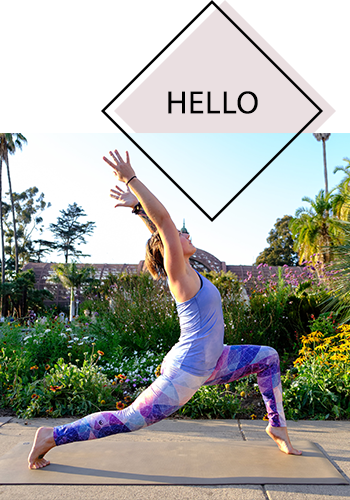How Yoga Can Help Improve Your Health and Wellbeing
/On why yoga is good for you.
Read MoreOn why yoga is good for you.
Read MoreBreathing in and out through the left side of your nose is a potent, simple way to calm your energy.
Read More
Have you ever thought about creating a sacred space at home where you can practice yoga or meditate?
I’ve always had the goal of clearing a spot where I can do my home practice.
No matter if your home is spacious or small, creating an at-home yoga space is a great thing to do. I’ve even seen beautiful little backyard areas and corners in the garage transformed into custom, calm ‘studios!’
Here are some tips from Dane O’Leary at the Modernize.net team about how to create a yoga space at home.

How to Create a Yoga Space at Home
Not only is yoga helpful in becoming physically healthy, but it's also great for your soul.
Many people invest in gym memberships and expensive classes in order to master the art of yoga under the impression that having a yoga studio at home is too expensive or requires too much space to be realistic. However, just about anyone can have a yoga studio at home. Here’s how you can create a home yoga studio where you can balance body, mind and spirit.
Less is More
When it comes to a yoga studio, you don’t need much in the way of furniture and décor. In fact, most experts and yoga instructors will tell you that less is more. In your minimalist yoga studio, the most essential thing is just to have the space to practice.
Serene Seclusion
Ideally, your at-home studio space will have a door you can close, so that you separate yourself from the rest of your home (and any kids or pets that want to join you!).
However, not everyone has the space available to designate a room for just yoga. A home office or spare bedroom — rooms that aren’t frequently occupied or are only occupied by you — are great for doubling as an at-home yoga studio.
The Space
To inspire serenity and tranquility, your yoga studio should feature calm, muted cool colors and warm cream colors. The color palette shouldn’t draw attention, but rather recede into the background. Lighting is also important. Installing a dimmer so that you have full control of your studio’s light would be optimal. Lamps with a three-way switch also give you more control over the amount of light.
Intention
Accessorize your yoga studio with things that will remind you of yoga and of your intent to improve your body and mind. Candles create a calming, serene environment and come in a variety of calming fragrances such as lavender, lemon, and jasmine. It might be a good idea to invest in a sound machine or an iPod dock you can use to play calming music. Potted plants are also soothing and therapeutic, lending themselves to the mood of your sanctuary.
Flea markets and yard sales are great places to find other treasures for your yoga studio. A trunk would be useful for storing your yoga supplies and a bookshelf or wall shelves would house candles, books, and inspirational items. You might consider hanging some posters, pictures, or artwork on the walls, but make sure they embody tranquility; things like ocean and beach scenes, Impressionist and abstract art are great for an at-home yoga studio.
Finish on the Floor
Professionals say that the floor of your yoga studio is perhaps the most important feature of your at-home yoga studio. Most recommend hardwood floors since they don’t get as cold as tile and other types of floors, they give a little while you move while being firm enough for support, and they won’t hurt your knees. Carpets are too soft and are poor for stability, but would be a good second choice.
Every yoga enthusiast needs a good yoga mat, perhaps more than one if you plan to ever have companions join you in your yoga studio. Large pillows and cushions also make for great floor seating as well.
Head to Modernize.com for more home ideas and inspiration.
Thanks, Dane, for these awesome ideas!

Photos via Unsplash.
PS How to create a space for hot yoga at home.

Alive in the Fire is a blog inspired by practicing yoga mindfully, teaching from the heart, giving hugs, and living a badass life.

Alive in the Fire is a blog inspired by practicing yoga mindfully, teaching from the heart, giving hugs, and living a badass life.
Donations help keep the programs and yoga classes at Alive in the Fire available to those in need. Your generosity is greatly appreciated!

Copyright 2017. All rights reserved - Alive in the Fire. Design by Hello Big Idea.